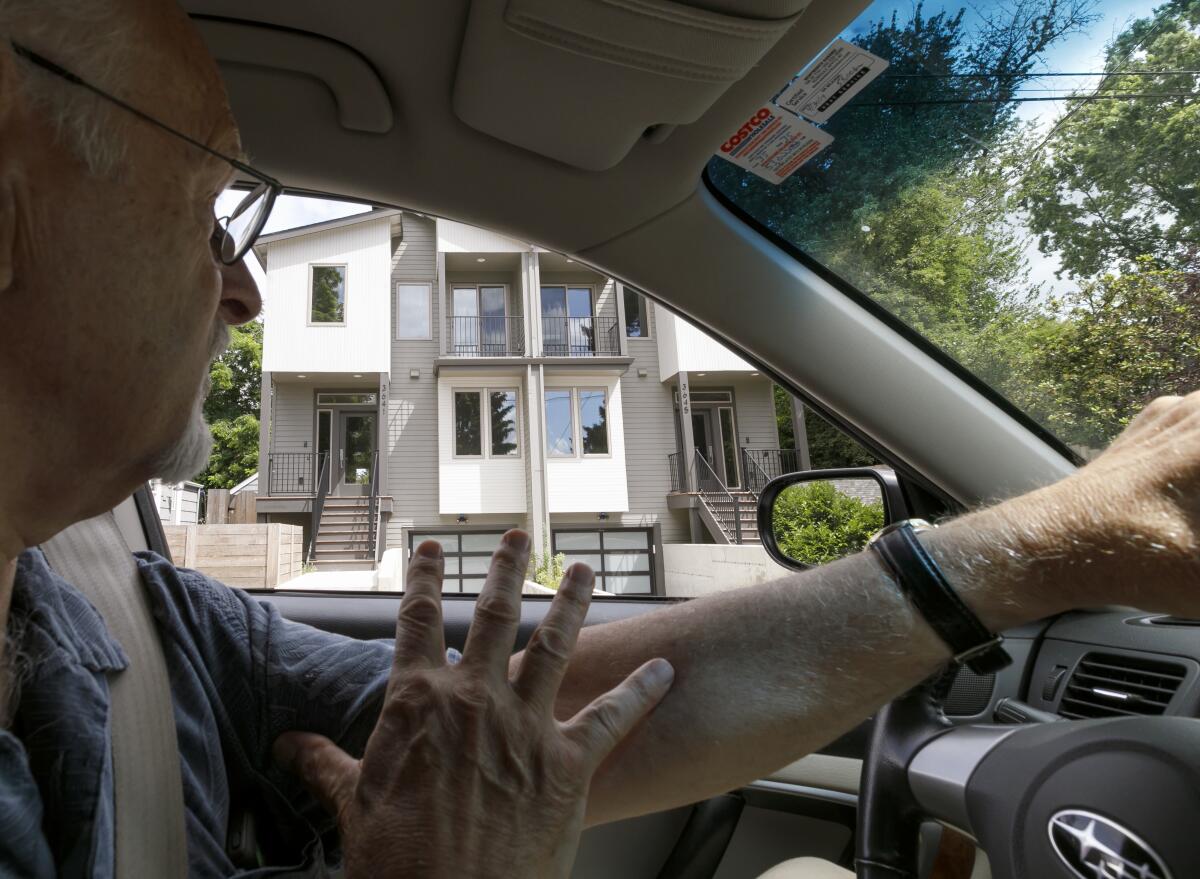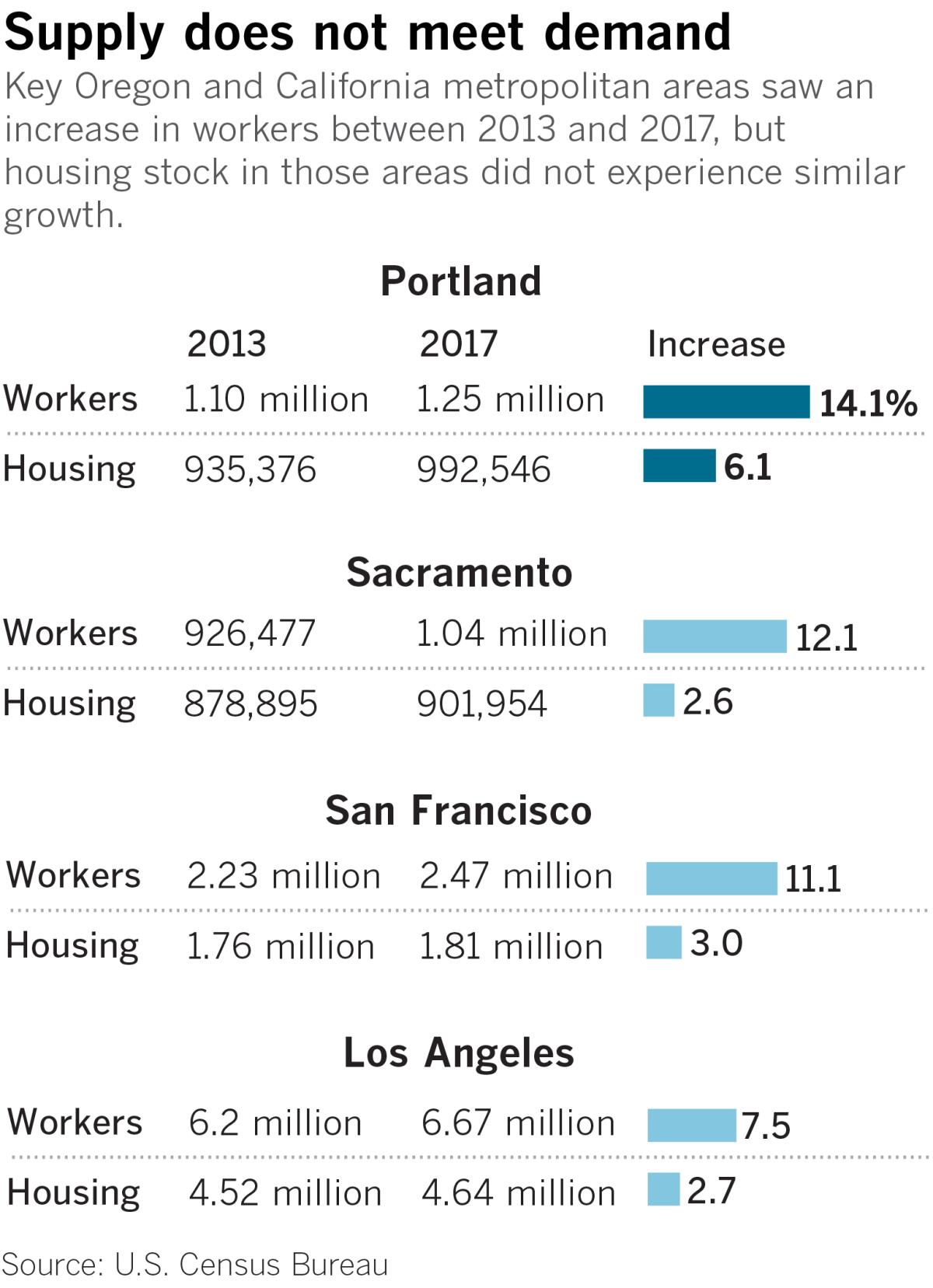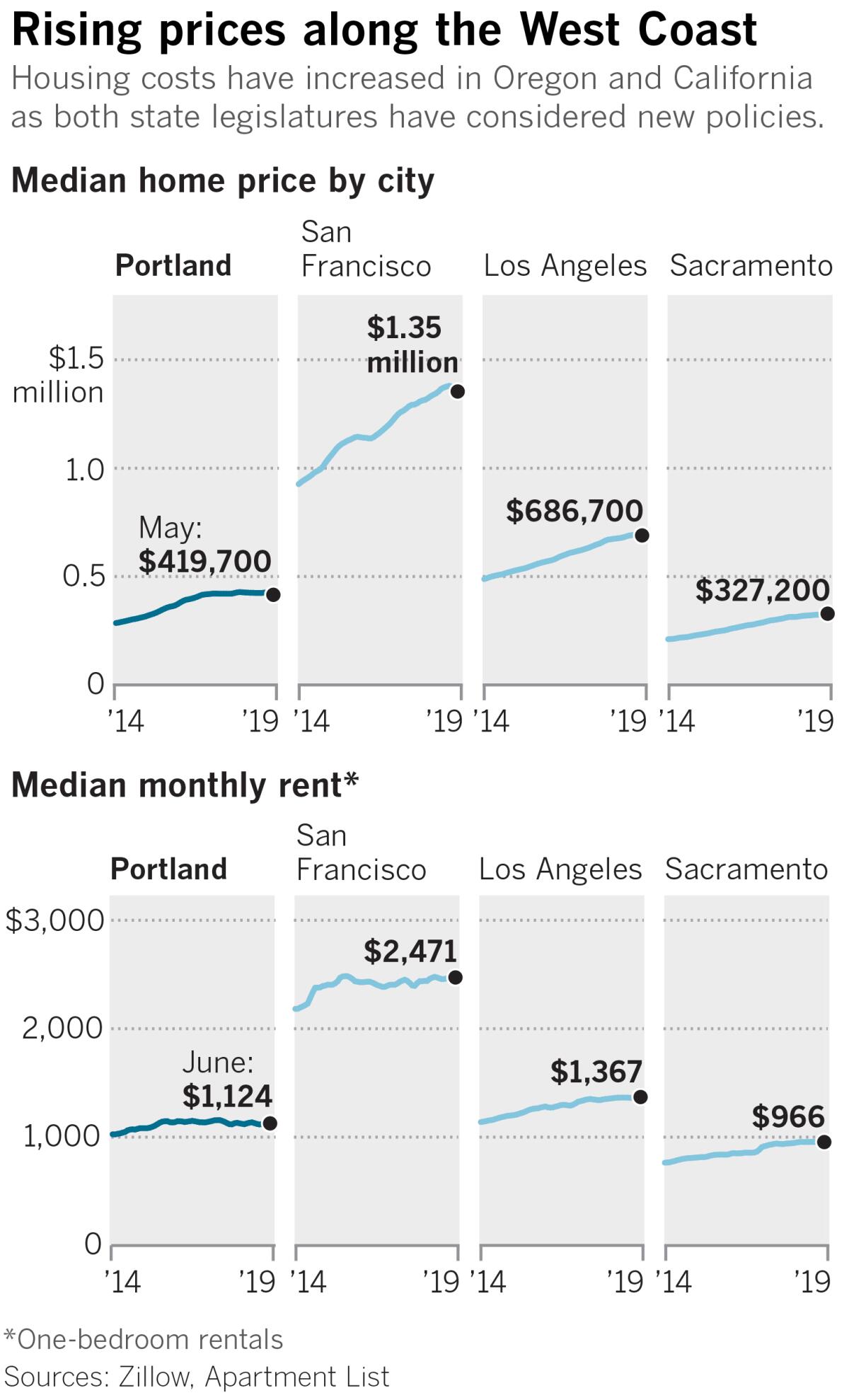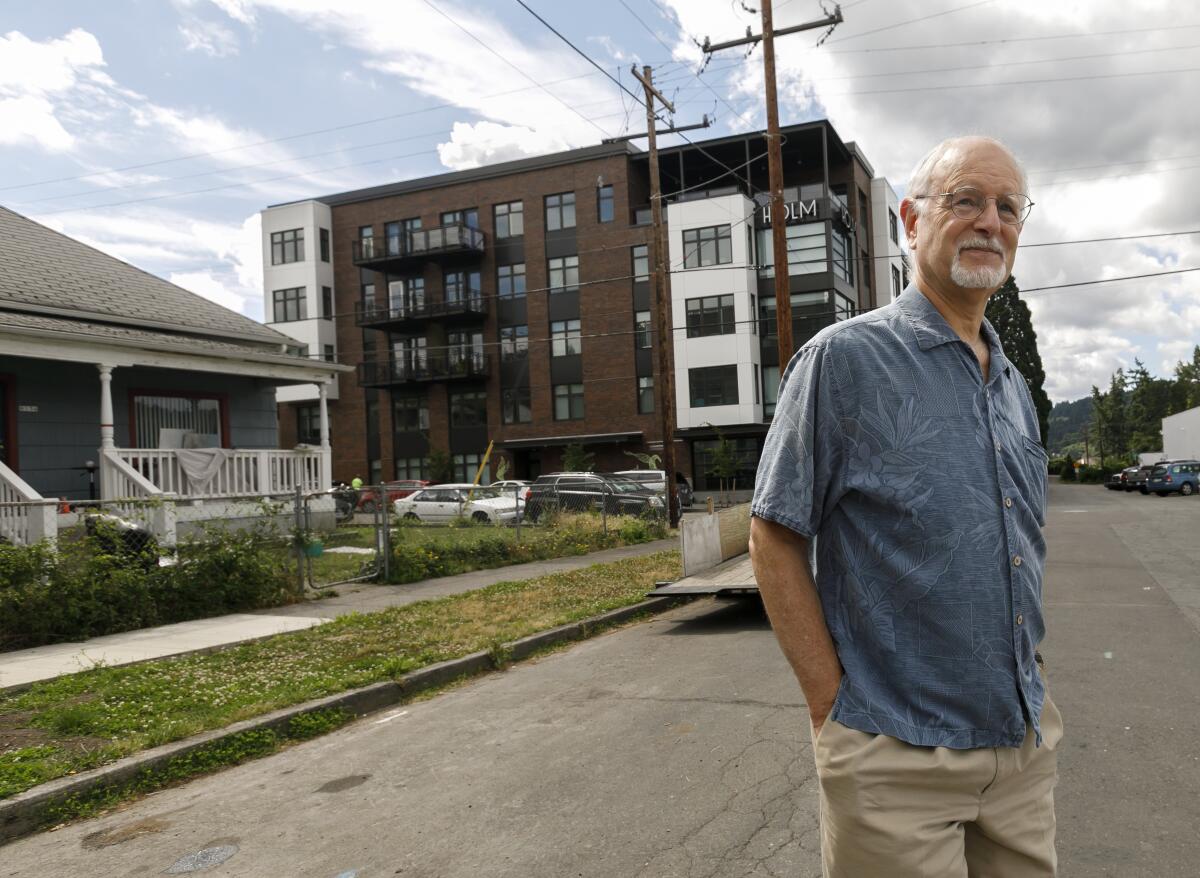Oregon vowed not to become California — and passed sweeping housing crisis legislation

PORTLAND, Ore. — When Oregon’s political leaders debated solutions to a housing crisis that was forcing renters from their homes and sending prices through the roof, they had a central goal in mind: avoid the fate of their neighbor to the south.
“In Portland, we’re just trying not to become San Francisco,” said Tina Kotek, the speaker of Oregon’s House of Representatives.
This year, Kotek and her colleagues advanced the most ambitious response to housing affordability challenges in the country. Lawmakers passed a first-in-the-nation cap on rent increases and, in an effort to spur new homebuilding, became the only state to eliminate single-family-only zoning in many of its residential neighborhoods.
But in California, Gov. Gavin Newsom and lawmakers have struggled to pass strong renter protections and legislation that would significantly increase the state’s housing supply. A bid to cap rents in the state has been significantly narrowed — under the current version of the legislation, the policy would expire after just three years. And a high-profile measure, Senate Bill 50, to increase residential development near transit stops and in single-family neighborhoods was shelved in the spring.
Those failures followed a major defeat for California tenant advocates at the polls in 2018 and were brought about in part by division among interest groups and a lack of involvement from Newsom and other key elected officials.
In Oregon, the opposite happened: Voters pushed legislators to act on housing, a larger and more diverse coalition of activists united behind the cause, and Gov. Kate Brown and legislative leaders came together to support a housing plan.

“Our crisis is so severe in this state, you have to do everything,” said Kotek, who drove the effort. “It’s that problematic out there for folks. We just came in and said, ‘We’re going to do it all.’ ”
Home to 4 million people, Oregon is one-tenth the size of California. The state’s median home value, according to real estate website Zillow, is $345,800, roughly equivalent to that of homes in Stockton. But parts of the state have seen a flood of job growth on par with that in California’s priciest metropolitan areas. And even though developers in Portland are building homes at a much faster rate than Los Angeles, San Francisco or San Diego, housing cost pressures have taken their toll.

The issue came to a head during last year’s election after a measure to expand rent control in Oregon stalled in the prior legislative session.
Frustrated tenant activists and union leaders set their sights on Rod Monroe, a three-term Democratic state senator from eastern Portland and landlord who opposed the renter bill. They protested outside his home, hung banners advocating his ouster from highway overpasses and promoted former state Rep. Shemia Fagan to take his place.
Fagan, who on the campaign trail discussed visiting her homeless mother as a child, defeated him in the Democratic primary by more than 40 percentage points.
“This is a message election,” Fagan told the Willamette Week newspaper on election night. “And the message is that Oregonians are ready to deal with the housing crisis.”
The November elections swept Fagan and other Democrats into power, giving the party supermajorities in both houses of the state Legislature. Two days later, Kotek, a Portland Democrat who was also behind the earlier failed rent control effort, called the leader of the Oregon Rental Housing Assn., the state’s largest landlord organization, and told him it was time to negotiate.
The resulting legislation would cap rents statewide at 7% annually plus inflation and block landlords from evicting tenants without a reason. It passed in February with the landlord group opting not to oppose the bill, which included some exceptions for newly constructed buildings and small property owners.
“The tide had changed,” said Jim Straub, the association’s legislative director. “We knew we weren’t going to be able to stop it.”

Outside a small apartment complex in southwest Portland, Pamela Phan, the organizing director of Community Alliance of Tenants, pointed at ripped screens and cardboard on windows and doors and said residents there had told her about infestations of rats, mice and cockroaches.
Tenants “complain and complain, but nothing gets done,” Phan said. “And the rents keep going up and up.”
Residents, many of whom are Somali, Latino or other immigrants from low-income families, prize the location for its proximity to a mosque and elementary school, she said. Some have seen rent hikes as high as 25% in recent years and a two-bedroom apartment that used to cost $750 a month about a decade ago now runs $1,300. Those in neighboring apartment complexes, she said, face the same challenges, underscoring the need for renter protections.

But Phan said capping rents alone won’t solve the state’s housing problems. Her organization, along with others representing tenants and communities of color, backed the legislation allowing up to four houses within neighborhoods zoned for single-family homes across much of the state. While her group wants to ensure that the policy rolls out with protections against displacing existing residents, she said single-family neighborhoods must open up to growth, citing the history of how those communities developed. Racist deed covenants often barred people from selling homes to nonwhites, government-sponsored lending practices provided low-cost mortgages only to whites and similar policies through the middle of the 20th century kept many nonwhites out of single-family neighborhoods.
“We know that single-family zoning is exclusive,” Phan said. “Folks who have gained generational wealth from single-family homes in this country are by and large white people. That was by design.”
Kotek’s legislation allows fourplexes in single-family home neighborhoods in the Portland metro area and other larger cities in the state. Smaller cities will have to allow duplexes, and rural communities face no changes. Advancing it took maneuvering, especially after GOP senators left the state to avoid voting on environmental legislation less than two weeks before the June 30 deadline to pass bills.
Kotek secured some Republican support for the housing measure, which helped insulate it from the partisan rancor. And, she said, the power of her position pushed senators to take up the bill a second time on their final day in session after it failed by a single vote on the first try.
She also had the backing of Brown, a Democrat who in January urged lawmakers to act in her State of the State speech. The governor said she was able to dedicate more funding in the state budget to help build low-income housing and plan for development in smaller cities to help lessen concerns among lawmakers that there wasn’t enough money to implement the ideas.
Brown said it was essential for her, Kotek and Oregon Senate President Peter Courtney, a Democrat from the state capital of Salem, to make housing a top priority — something she said Newsom and California’s legislative leaders must do to pass similarly robust measures alongside colleagues of all viewpoints.
“The extent of Oregon’s housing crisis was really felt across the political spectrum,” said Brown, who plans to sign the bill curtailing single-family zoning. “From left to right. Everyone was ready to take action.”
Unlike California, Oregon has a deep legacy of state involvement in housing issues through legislation passed in the 1970s that restricts growth to urban areas. That history, Brown said, also eased the path for the state to mandate changes to local zoning rules.
But there are other political differences between the states. In Oregon, last fall’s election brought in legislators who promised to add more protections for renters. The same thing happened in New York, whose Legislature recently passed its own set of rent stabilization measures. But in California, a ballot initiative to expand rent control failed in the November election by nearly 20 percentage points, giving landlord groups more leverage to oppose such efforts.
Oregon’s bill to increase density in single-family-home-only neighborhoods had the backing of organizations representing renters and low-income residents. California’s version of that legislation, SB 50, which would have also allowed mid-rise apartments to be built near transit, did not have many of those interest groups on board, with some fearing gentrification.
Newsom, Senate President Toni Atkins (D-San Diego) and Assembly Speaker Anthony Rendon (D-Lakewood) have frequently discussed the need to address the state’s housing problems, but none have publicly championed measures like those in Oregon. Newsom’s chief of staff apologized for telling tenant advocates that the governor had lobbied lawmakers to advance a renter protection measure when he hadn’t. The bill was shelved soon after. In May, a Senate fiscal committee chairman blocked SB 50 without a public vote, and Atkins did not intervene to move the bill forward.

The deepest opposition in California to SB 50 came from owners of single-family homes. The same is true of the zoning bill in Oregon.
Rod Merrick, 70, has lived in his home at the end of a cul-de-sac in Portland’s Eastmoreland neighborhood for nearly four decades. The community has a public golf course, a tree-lined boulevard that leads up to private liberal arts school Reed College and a botanical garden. Merrick, who is an architect, has been frustrated that developers are buying older homes in the community and replacing them with larger, new single-family homes and duplexes.
He worries that the new legislation will accelerate that process by leading to the development of fourplexes that he believes will be less affordable than existing homes and out of scale with the community.
The legislation is “envisioned by urbanists and planners as salvation, and it’s a really bad idea,” he said.
Instead of pushing development into single-family neighborhoods, he said, lawmakers should add incentives to build in the city’s commercial and transportation corridors.
But to Kotek, those objections don’t acknowledge the depth of the state’s housing problems.
“You know the argument, ‘I’m really supportive of this, but can’t we just have people live next to transit? Can’t we just put them in certain places?’ ” she said. “And I was like, ‘No.’ The goal is to have diversification throughout the neighborhoods so you’re not having concentration based on income or based on any other factor.”
Kotek regrets that she didn’t think of the bill to increase density sooner. She believes it could have helped alleviate the housing shortage in the state, something she believes leaders in California should consider.
“California needs to get it done,” Kotek said. “They’re behind.”
More to Read
Sign up for Essential California
The most important California stories and recommendations in your inbox every morning.
You may occasionally receive promotional content from the Los Angeles Times.











